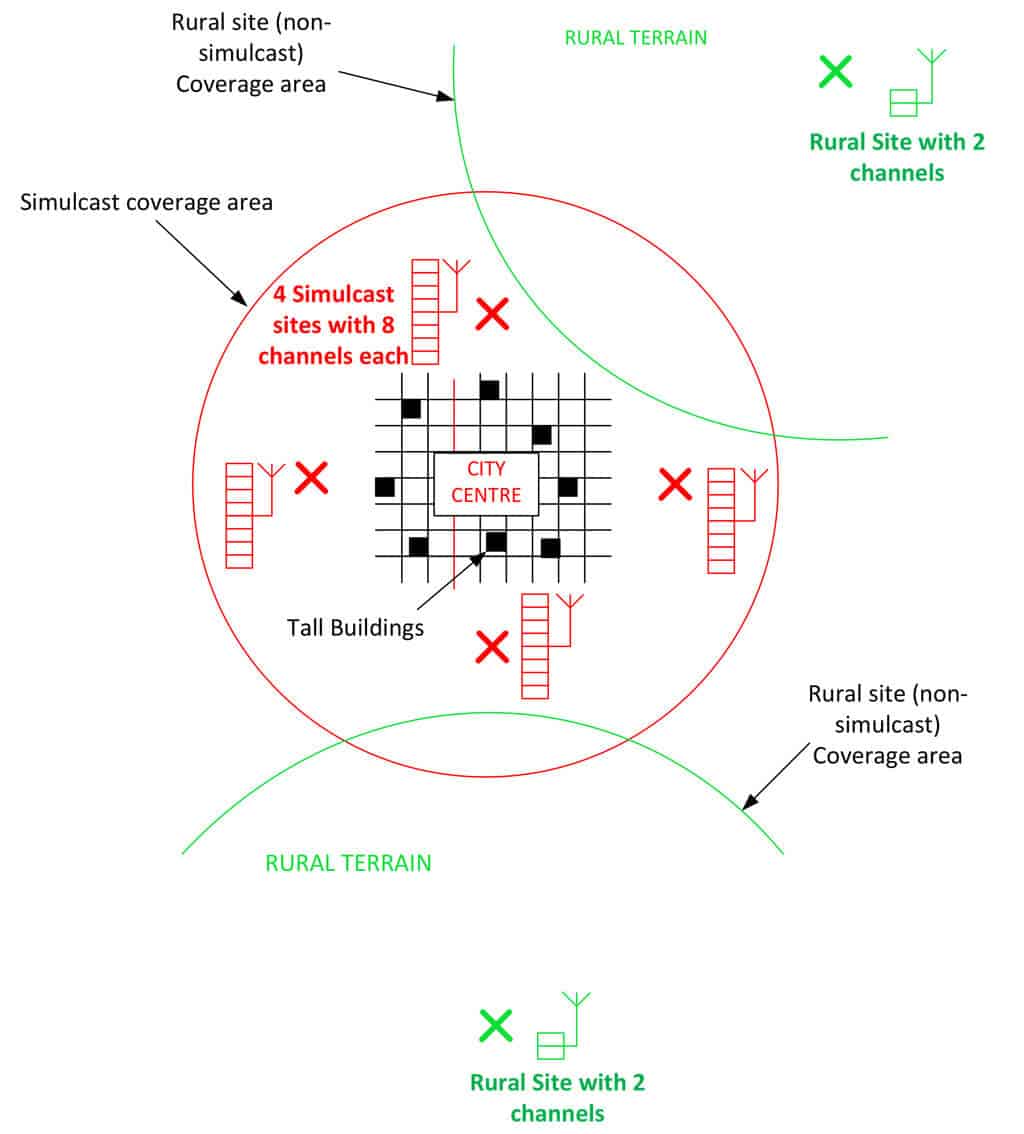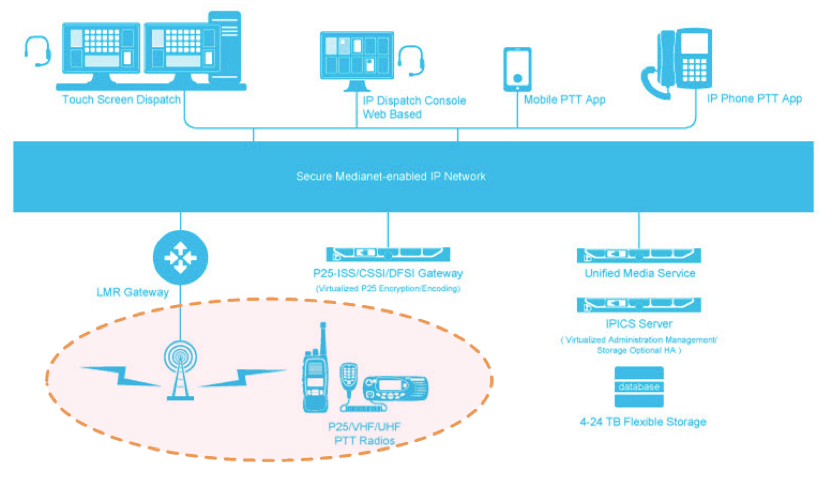 What is Simulcast?
What is Simulcast?
Simulcast is a technique that allows wide area coverage to be achieved with a single radio channel (a single frequency pair). Normally, all sites in a radio system in the same geographic area transmit using different frequencies to minimize interference. With Simulcast, each site uses the same set of frequencies. Close control of the frequency error, transmit power and timing of the transmissions from each site are used to minimize interference.
Why use Simulcast in the city?
- If the 4 sites used to cover the city were non-simulcast, the terminals would be continually changing from one site to another as they drive in and out of tall building ‘shadows’.
- This causes the audio to break up.
- With Simulcast, because all the simulcast sites operate at the same frequency, audio quality is maintained as no switching between sites is necessary.
Why not use Simulcast in rural areas?
- To save cost.
- A simulcast system at a rural site would need all 8 simulcast channels. A non-simulcast system would only require 2 channels to give the necessary capacity.
Scenario
- Assume 6 sites are needed to provide coverage to an area consisting of urban and rural parts
- The urban parts require 8 channels to handle the radio traffic whereas the rural parts only require 2 channels.

Key Differentiators
Voting
• The voter chooses which site to use. Unlike systems that have a separate voter unit, with Tait Base Stations, the voter is built in to the base station, so:
• The Tait voter dynamically chooses the best signal throughout the call. If one base station fails, another site can take over the voting function.
Important Takeaways
Tait has a successful history of deploying large simulcast systems like the MACC 9-1-1 Solution. But, the key takeaway here is to be aware of when and when not to use simulcast. The following guidelines should help.
- To cover city and rural areas, for best performance and minimized costs, use simulcast for the city areas, and non-simulcast (multicast) for the
rural areas. - Use simulcast if you need more than one site to cover urban/city area.
- The exception – when to use simulcast in rural areas – is where a single frequency pair is required to cover the whole area, eg: paging or
inter-operable (mutual aid) channels. - When the number of users in the area is too high to serve with a single simulcast cell (a group of sites all operating on the same channel), use
multiple simulcast cells (separate groups of simulcast cells with each group using a unique set of channels). - If you can achieve from a single site what you would need multiple sites to do, then use the single site – the audio will likely ‘sound better’.
Where does it fit
Within the entire system, simulcast is a technique used in radio communications between the sites and the terminals.

So is Simulcast right for me?
Here are some common questions to work through if you are considering a simulcast solution.
- What area do you need to cover?
- What is the terrain like?
- How much of the area to be covered is city, urban or rural?
- How many RF channels do you have available/licensed?
- Do you maintain your own radio system? Would you consider it being managed?
If you would like help working through your system design or would like to speak to our technical engineers, simply contact the team through the main website or leave a comment below.
You can continue reading about simulcast in the following blog post:



